Comfrey Seeds

Herb Specifications
Season: Perennial
USDA Zones: 4 - 9
Height: 60 inches
Bloom Season: Late spring through summer
Bloom Color: Purple
Environment: Full sun to partial shade
Soil Type: Rich organic soil, pH 6.0 - 7.0
Deer Resistant: Yes
Latin Name: Symphytum Officinale
Planting Directions
Temperature: 60 - 70F
Average Germ Time: If germination does not occur after 14 - 21 days a cooling period of 2 - 4 weeks is recommended
Light Required: Yes
Depth: 1/8 - 1/4 inch deep
Sowing Rate: 1 - 2 seeds per plant
Moisture: Keep seeds moist until germination occurs
Plant Spacing: 36 inches
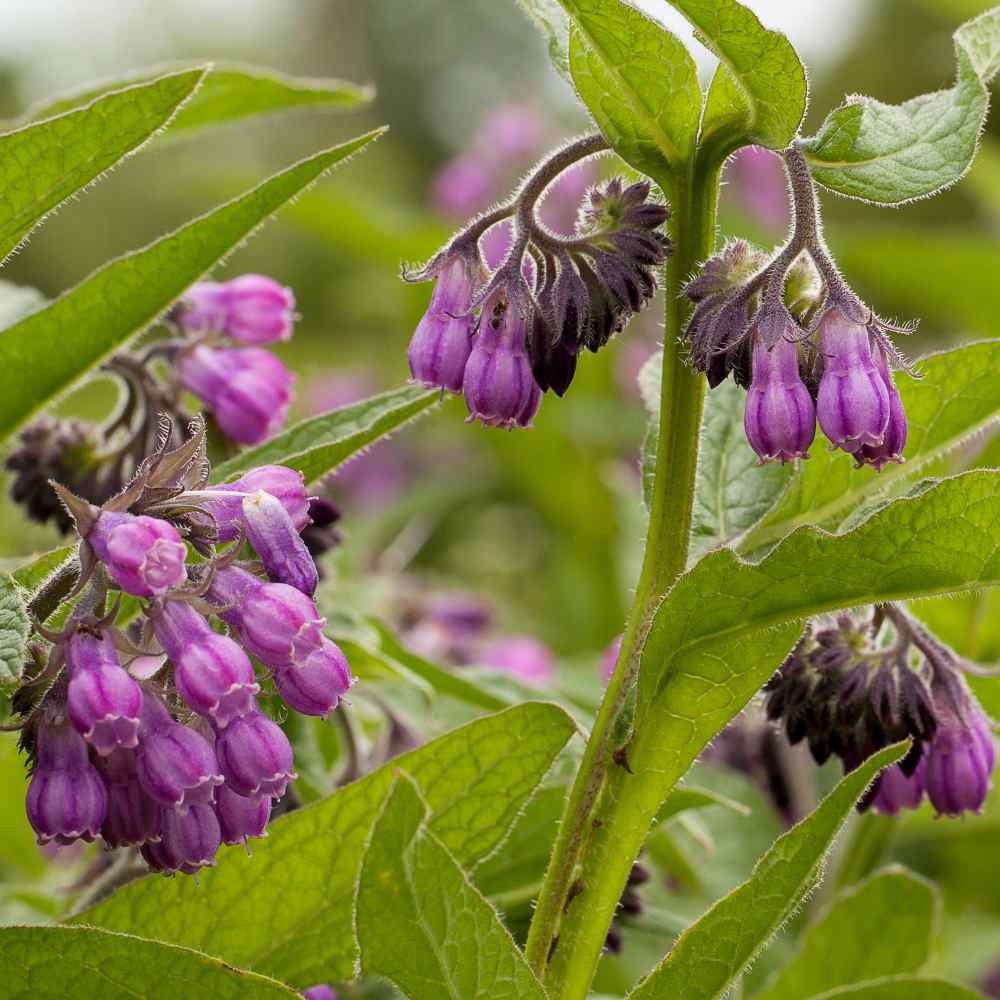
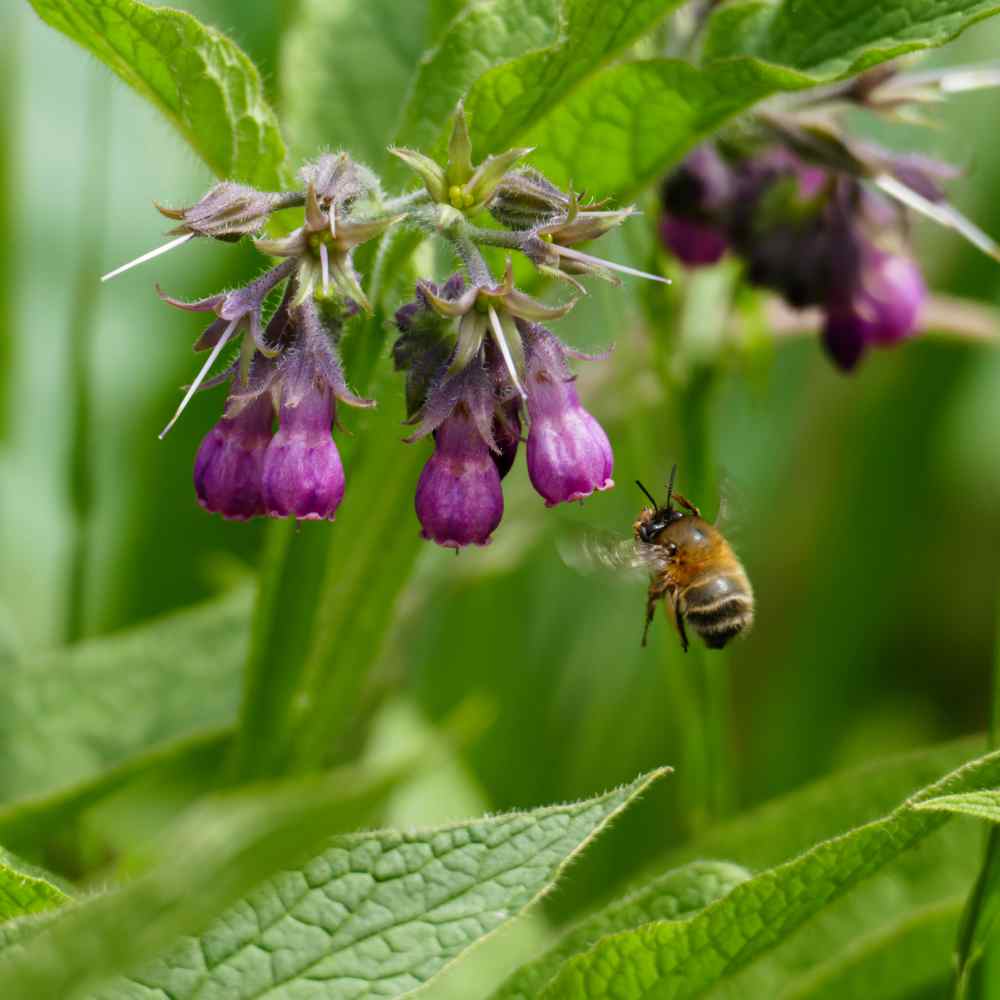
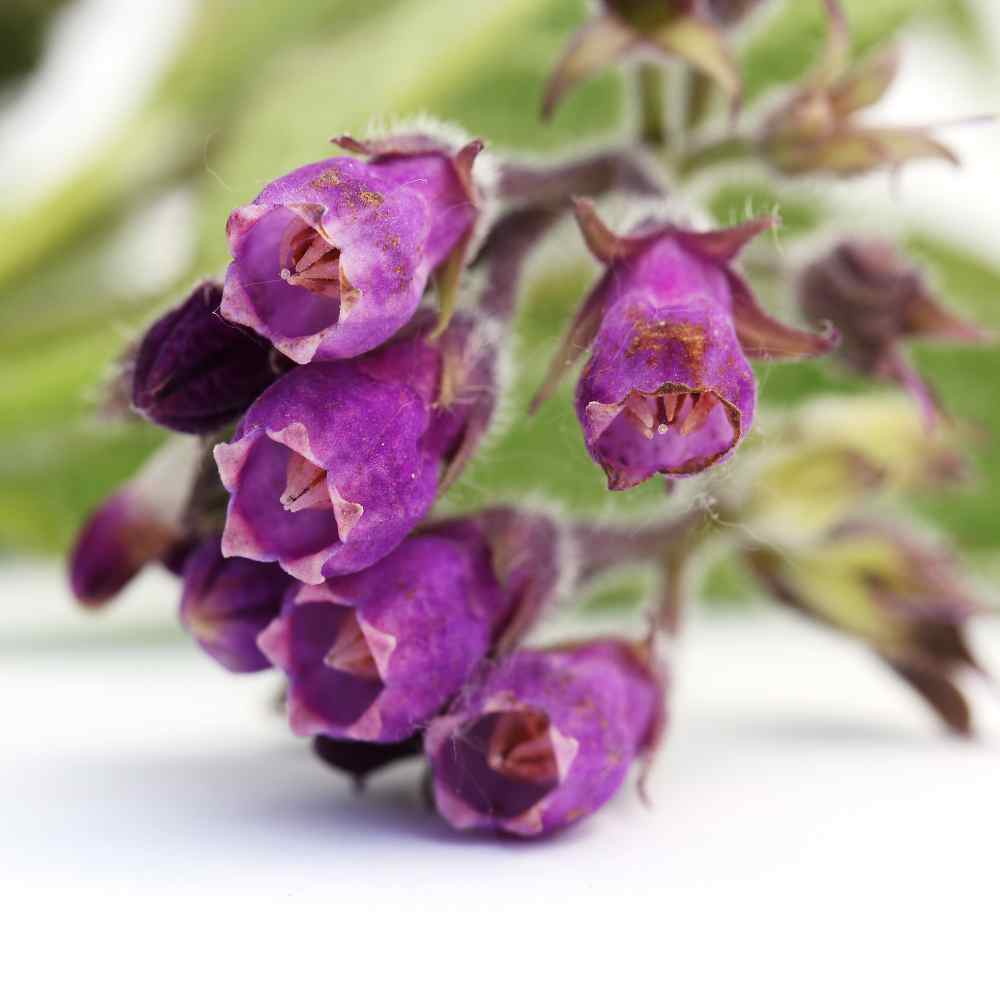
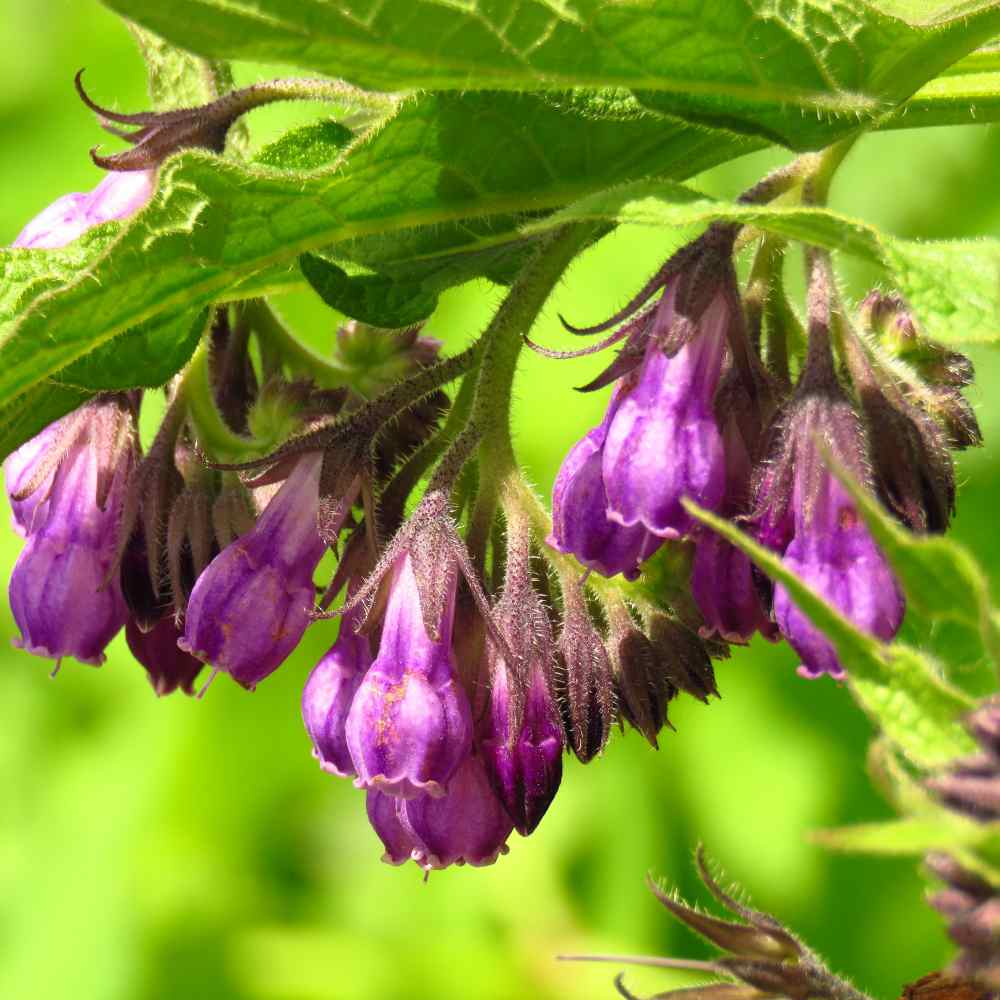 <
< 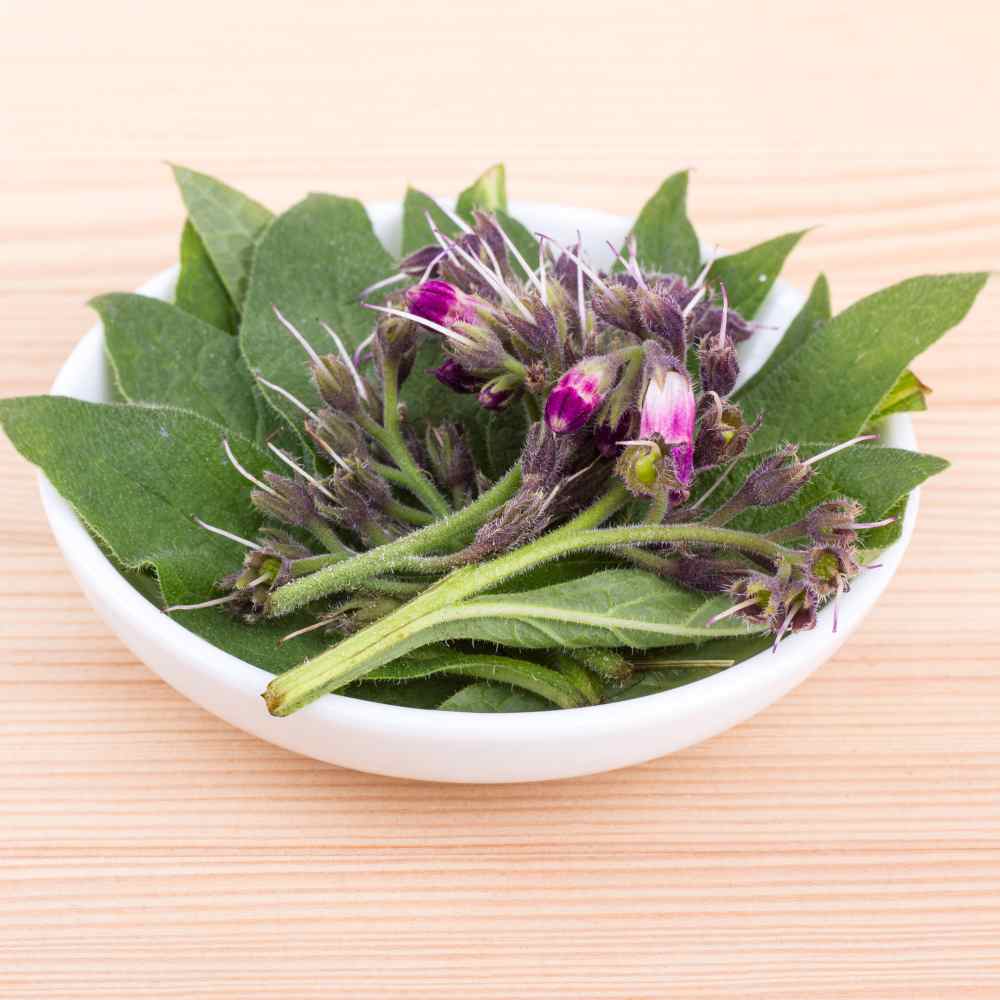
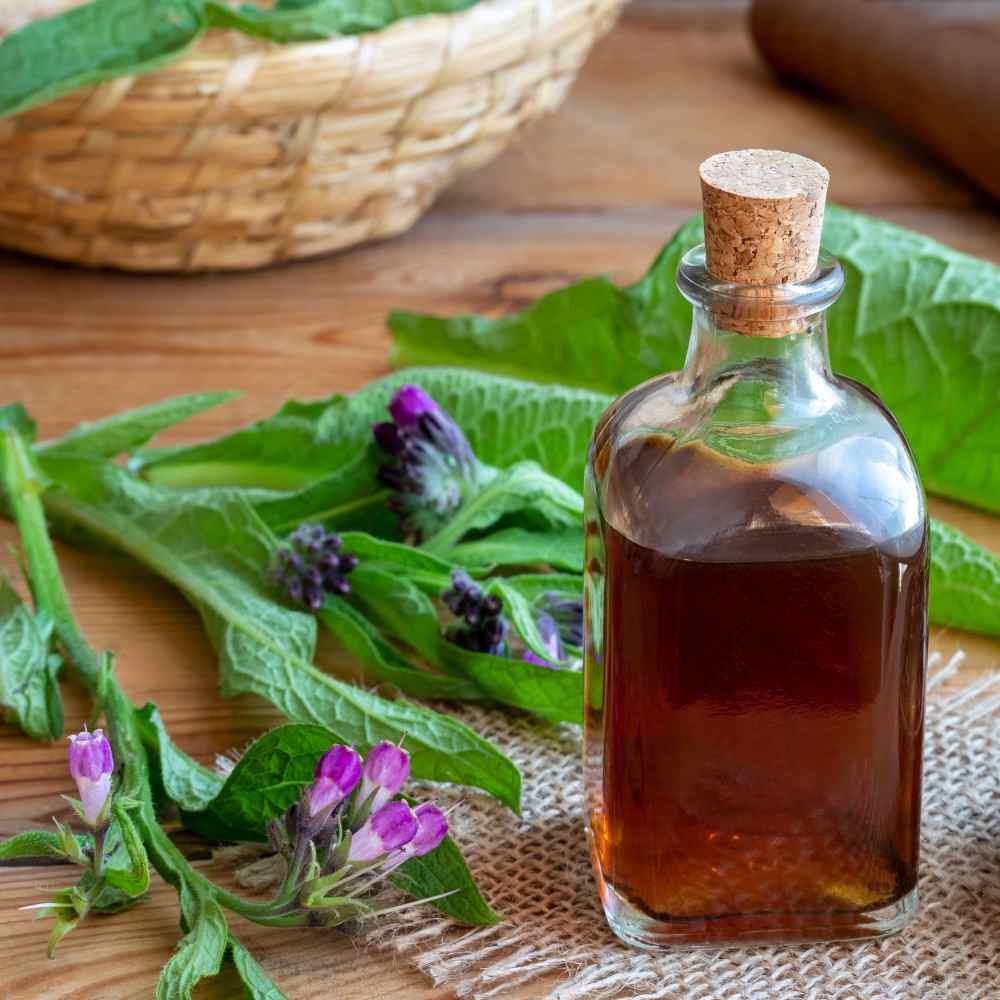
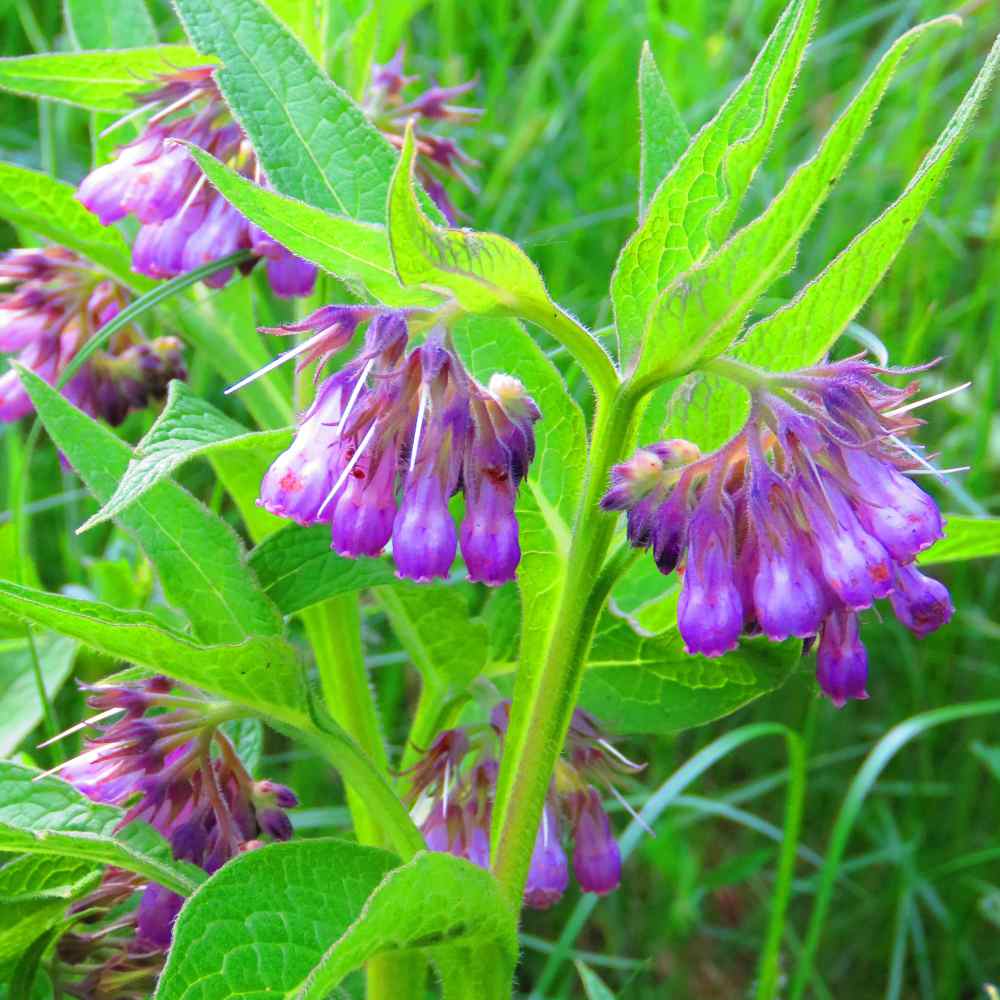

Comfrey (Symphytum Officinale) - Comfrey has been used as a healing herb for centuries. The comfrey herb is native to Asia and Europe, but early English immigrants brought it to North America for medicinal purposes. Common Comfrey, Latin name: Symphytum officinale, grows to be approximately 60 inches tall. It has slender lance-shaped leaves and produces bell-shaped purple flowers that bloom from May to September. Comfrey, even when grown from Comfrey seed, has a deep root system with thick dark-colored roots. Comfrey may have violet, pink or creamy yellow flowers.
Comfrey contains chemicals that speed up wound healing. It has astringent, antifungal and antibacterial properties. Comfrey also contains a wide variety of healthy chemicals and nutrients. It has been recently learned that it can be a carcinogenic when taken internally, but it is still used as a topical treatment for skin irritations, cuts, sprains and swelling.
The form and size of the Comfrey herb might have you thinking it is a shrub, but it will die back to the ground in the winter and it does not get woody. Comfrey has a deep tap root, so it is extremely drought tolerant and a useful clay busting plant. It is also useful as a slug and snail repellent.
Leaves can be harvested and dried at any time. If you are growing it to harvest the leaves, you can make your first cutting when the plants are about 2 feet tall. Cut back to within a few inches of the crow. If you begin harvesting early, you won't get flowers. Leaves, flowers and roots have all been used in traditional medicine, but use extreme caution if you don't know what you're doing. Comfrey should never be taken orally and even a topical application can cause problems.
Grows quickly
Comfrey plants grow up fast early in the season, reaching a height of about 3 or even 5 feet. The lower leaves are large, the plant features hanging bells of flowers at the top of the plant.

Comfrey | herb seed
How to grow
Planting Comfrey from Seeds: As with all rapid growers, comfrey needs a lot of nitrogen. Comfrey gets all its nitrogen from the soil, so some regular fertilization is essential. It does best with good soil moisture until establishment.
When planted in the right place, it will pretty much take care of itself. Once the comfrey plant is mature and established, it should not require excessive amounts of water and may not need to be watered at all!
- â–¼ Requires cold treatment â–¼
- Step 1: Sow seed in a moisten soil-less growing medium like peat moss
- Step 2: enclose in plastic bag or small container then place in refrigerator for a 20-60 days.
- Step 3: Place in a warm area for germination, providing soil temperatures of 68-80 degrees F

Grow your own herbs
Comfrey is a beautiful addition to any border and is great for grabbing attention to the back of a border. Comfrey's tall height makes it a perfect candidate to grow around trees in an orchard. As a nutrient accumulator, comfrey mines the subsoil for nutrients (potassium, phosphorus, calcium, and more).
- Perfect for permacultures
- Attracts pollinators
- Provides habitat for beneficial insects
- Fertilizes with nutrient-rich mulch

Comfrey: Permaculture Hero
Excellent bioactivator: Adding comfrey cuttings to a compost bin is an easy way to balance out the carbon-to-nitrogen ratio and jumpstart decomposition. The finished compost will have a higher nutrient content with the addition of comfrey
Conditions soil: Comfrey’s deep roots (up to 6 feet deep!) break up tough clay and create channels for aeration and better water absorption. If you have an area with compacted soil where you plan to grow perennials in the future, plant the area with comfrey to break up and loosen the soil in preparation.
Mulch with comfrey: Helps retain moisture and protect beneficial soil organisms. Comfrey mulch decomposes quickly, which activates soil microbes. This will protect your soil and help prevent erosion.































